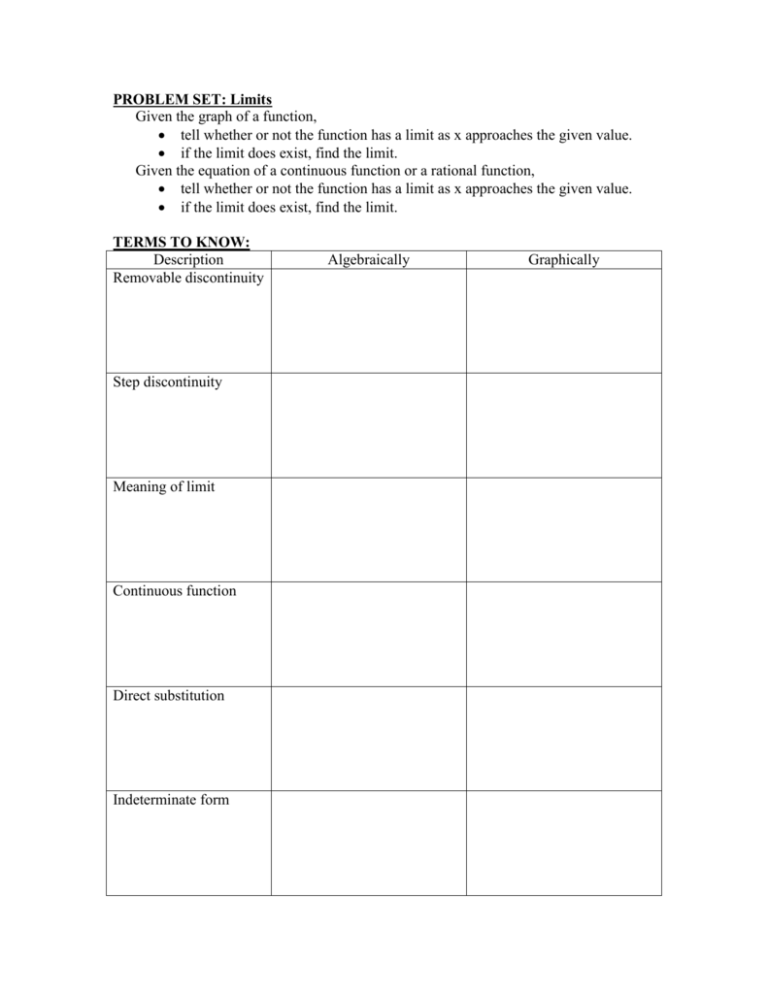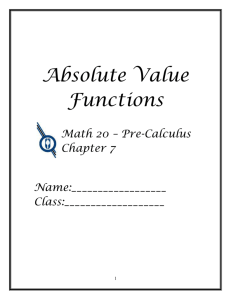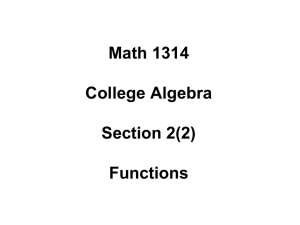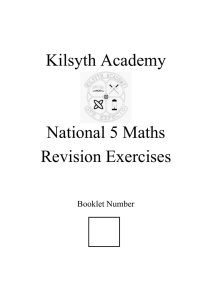limits
advertisement

PROBLEM SET: Limits Given the graph of a function, tell whether or not the function has a limit as x approaches the given value. if the limit does exist, find the limit. Given the equation of a continuous function or a rational function, tell whether or not the function has a limit as x approaches the given value. if the limit does exist, find the limit. TERMS TO KNOW: Description Removable discontinuity Step discontinuity Meaning of limit Continuous function Direct substitution Indeterminate form Algebraically Graphically Limits of continuous functions 1. For the function f ( x) 3 x 7 : a. Sketch the graph for 0<x<8. b. What does the limit appear to be as x approaches 4? Label this on your graph. c. Find f(4) algebraically. How does this answer compare to the limit you found in part b? 2. For the function f ( x) x 2 6 x 13 : a. Sketch the graph for 0<x<6. b. What does the limit appear to be as x approaches 2? Label this on your graph. c. Find f(2) algebraically. How does this answer compare to the limit you found in part b? 3. For the function f ( x) 2 x 1 3 : a. Sketch the graph for -2<x<3. b. What does the limit appear to be as x approaches 1? Label this on your graph. c. Find f(1) algebraically. How does this answer compare to the limit you found in part b? 4. For the function f ( x) log 2 x : a. Sketch the graph for -1<x<10 b. What does the limit appear to be as x approaches 8? Label this on your graph. c. Find f(8) algebraically. How does this answer compare to the limit you found in part b? Write a rule for finding the limit of a continuous function: Limits of Rational Functions 4x 2 7 x 2 5. For the function y : x2 a. Sketch the graph for 0<x<5. b. What does the limit appear to be as x approaches 3? Label this on your graph. c. Evaluate f(3) by direct substitution. How does this answer compare with the limit you found in part b? d. Using your graph, what does the limit appear to be as x approaches 2? Label this on your graph. e. Try to evaluate f(2) by direct substitution. What form does the answer take? What special name is given to a form such as this? f. Factor the numerator and simplify the expression by canceling the common factor. Now substitute x=2 into the simplified expression and evaluate. How does this answer compare with the limit you found in part d? 2 x 2 5x 3 : x2 9 a. Sketch the graph for -5<x<5. 6. For the function y b. What does the limit appear to be as x approaches 2? Label this on your graph. c. Evaluate f(2) by direct substitution. How does this answer compare with the limit you found in part b? d. Using your graph, what does the limit appear to be as x approaches -3? Label this on your graph. e. Try to evaluate f(-3) by direct substitution. What form does the answer take? What special name is given to a form such as this? f. Factor the numerator and simplify the expression by canceling the common factor. Now substitute x = -3 into the simplified expression and evaluate. How does this answer compare with the limit you found in part d? Write two rules for finding the limit of a rational function:







